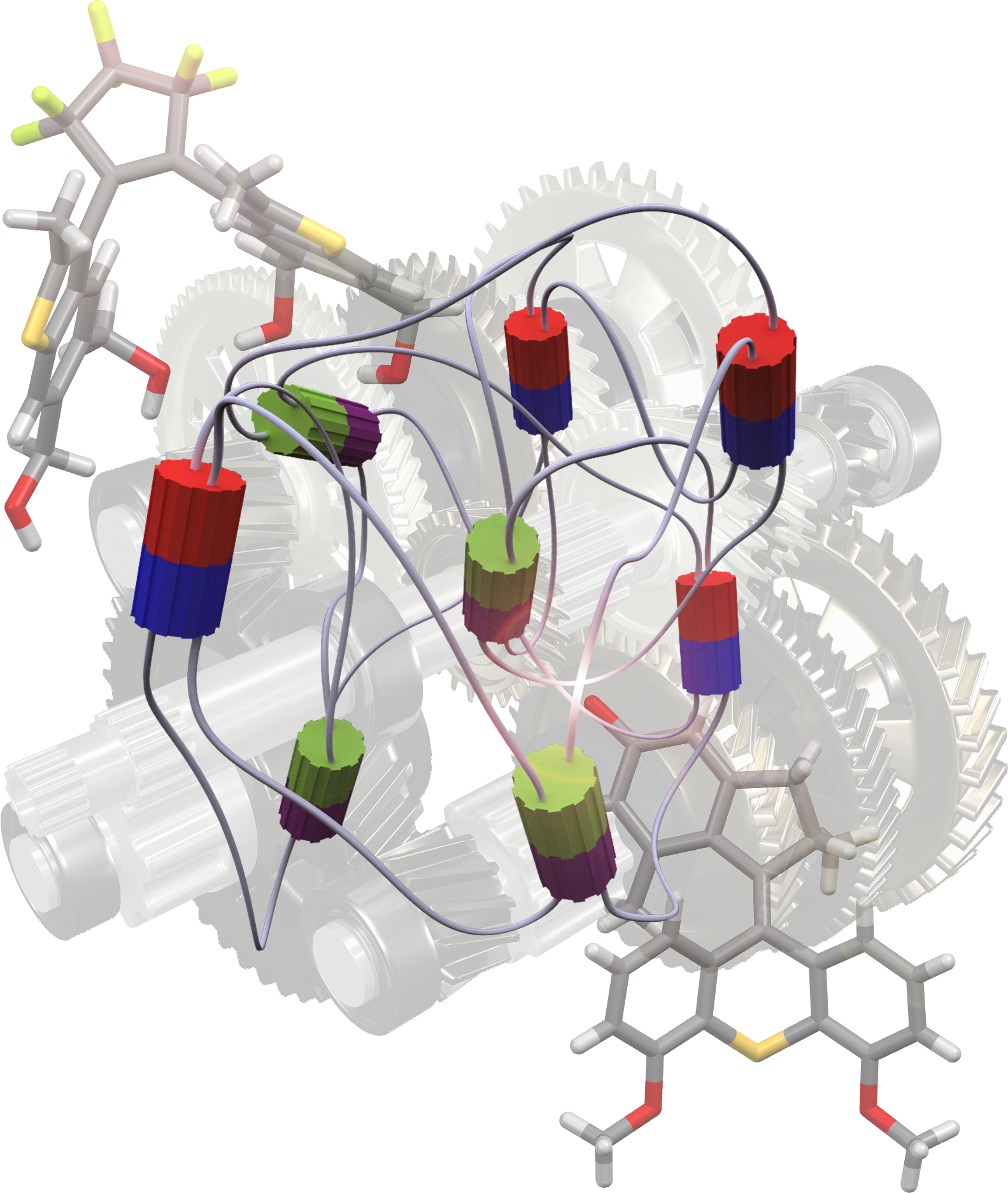Molecular motors can produce a cyclical mechanical movement using an external energy source, for example a chemical or light source, combined with Brownian motion (the disordered, random movement of surrounding molecules). The nanomotor is therefore subject to molecular collisions on all sides, which complicates the production of directed, useful mechanical work. The first molecular motors of the 2000s used the Brownian ratchet principle which, like a notch on a cog stopping a mechanism from moving in reverse, distorts the Brownian motion so that the motor only works one way. This provides usable work, but stops it from changing direction.
The research team has therefore been looking for a way to reverse the movement. To do this, they have attached motors to molecular modulators (clutch subunits) using polymer chains (transmission subunits). A mathematical model has also been drawn up to make sense of the network’s behaviour.
When exposed to ultraviolet irradiation, the motors turn but the modulators remain immobile. The polymer chains wind themselves up, and contract like a rubber band that shortens as it is twisted. The phenomenon can be observed on a macroscopic scale: the molecules form a material that contracts.
When the molecules are exposed to visible light, the motors stop and the modulators are activated. The mechanical energy stored in the polymer chains then rotates the modulators in the opposite direction to the original movement, and the material stretches.
More amazing still, the researchers were able to demonstrate that the rate and speed of the work produced can be carefully regulated through a combination of UV and visible light, like a gearbox functioning through modulations in frequency between the motors and modulators. The team is now attempting to use this study to develop photomechanical devices that can provide mechanical work controlled by light.
Artist’s impression of a nanomachine combining motor (red and blue) and clutch (green and purple) subunits connected by transmission subunits (polymer chains, shown here as wires).
These two types of subunit turn in opposite directions when exposed to two different light sources. When the motors turn (activated by UV light), they wind up the pairs of polymer chains, and the material contracts. When the clutch subunits turn (under the effect of white light), they unwind the polymer chains, and the material stretches. By varying the light intensity, it is possible to modulate the relative frequency of the winding and unwinding, and to thereby manage the overall transmission of the movement, in a similar way to a vehicle’s gearbox.
The motor subunit is represented in detail on the lower right, and the modulator subunit on the upper left.

Représentation artistique d’une nanomachine associant des unités motrices (rouges et bleues) et des unités de débrayage (vertes et violettes) et liées par des unités de transmission (chaines polymères représentées sous forme de fils). © Gad Fuks/Nicolas Giuseppone/Mathieu Lejeune/ Woverwolf/Shutterstock.com